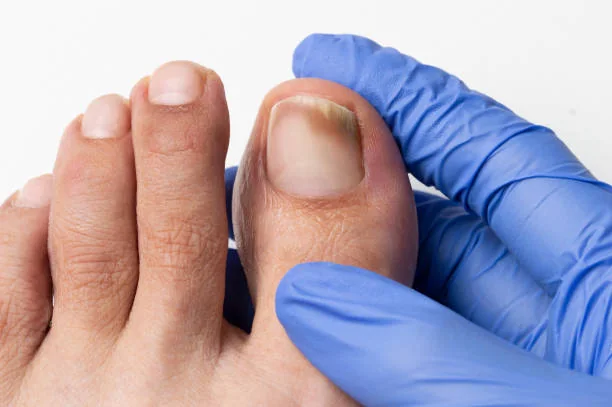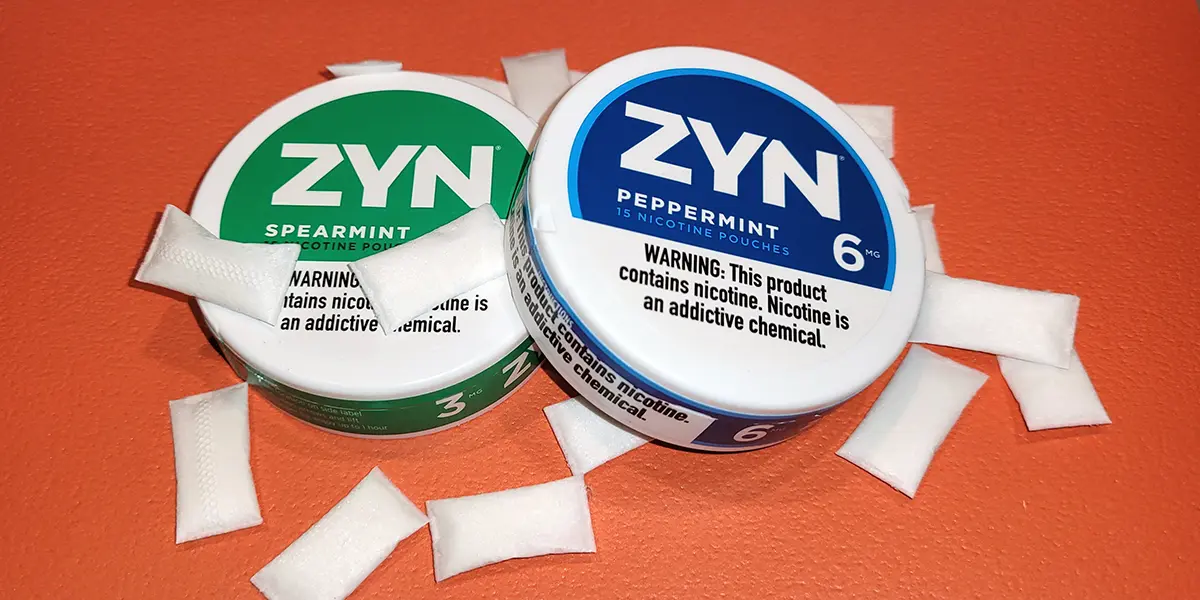Maybe you’ve been staring at your toenail for weeks now — not in a creepy way, just… checking. Wondering if that stubborn patch of yellow, the one you swore you’d finally do something about, is getting better.
And that’s the thing — how to know if toenail fungus is dying isn’t always obvious. It’s not like the fungus packs up and waves goodbye one morning. Sometimes the changes are subtle. Frustratingly so.
Toenail fungus (the medical crowd calls it onychomycosis) is more common than most people admit. It sneaks in through tiny cracks, thrives in warm, damp places — sweaty running shoes, a locker room floor you didn’t think twice about walking across — and can linger for months or even years if ignored. And yes, it can be treated, but tracking the progress? That’s a whole other challenge.
The good news: you can notice signs of healing without waiting for a lab test. Not instantly, not perfectly — but enough to reassure yourself that the treatment you’ve committed to (whether that’s prescription antifungals, over-the-counter creams, or some tea-tree-oil concoction your aunt swears by) is doing its job.
I’ll be honest, spotting improvement early matters. It helps you stick to the wellness routine, stops you from throwing in the towel too soon, and most importantly, keeps a relapse from sneaking back in.
1. Understanding How to Know If Toenail Fungus Is Dying
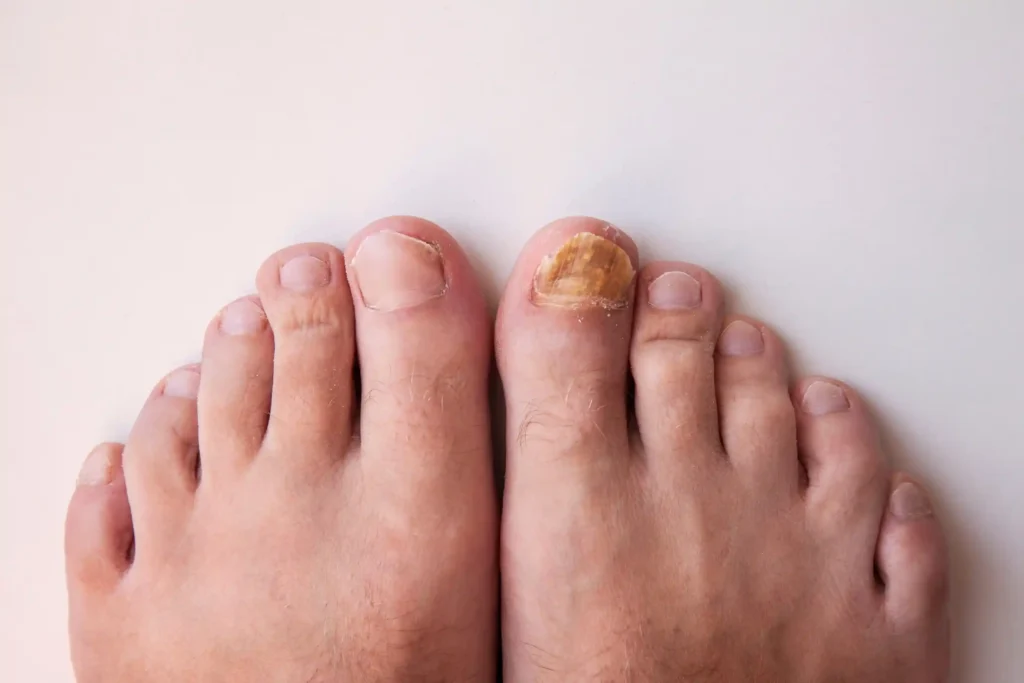
Before we can talk about spotting the healing process, it helps to know exactly what you’re up against. Toenail fungus isn’t just a cosmetic nuisance — it’s a slow, persistent infection that digs into the keratin of your nail.
1. What Is Toenail Fungus (Onychomycosis)?
At its simplest, it’s a toenail infection that lives in or under the nail plate. Over time, it feeds on keratin, making the nail thicker, discolored, brittle, and sometimes oddly shaped.
And the weirdest part? Your nail isn’t alive — but the nail bed underneath is, which is where the fungus causes the most trouble.
2. Common Causes & Risk Factors
Some are obvious; some will make you go, Oh… that explains a lot.
- Regularly wearing tight, sweaty shoes
- Walking barefoot in public showers or pool decks
- Sharing nail clippers without disinfecting them
- Having a compromised immune system or poor circulation
- Previous nail injury that weakened the nail’s barrier
You might not hit all these boxes, but it only takes one or two to create the perfect storm.
3. How does it progress if Untreated?
This part’s not pretty. At first, you might see a faint yellow streak near the tip. Then — slowly — it creeps toward the cuticle. The nail thickens, crumbles at the edge, and loses its smooth texture. In advanced cases, it can even lift away from the nail bed, which is as uncomfortable as it sounds.
And here’s the kicker: fungus doesn’t work fast… but neither does your toenail. Left alone, the infection keeps spreading until there’s barely any healthy nail left.
(If prevention’s on your mind, there’s a great breakdown in “Best Preventive Habits for Healthy Toenails” that’s worth a look.)
2. Why Healing Signs Can Be Subtle?
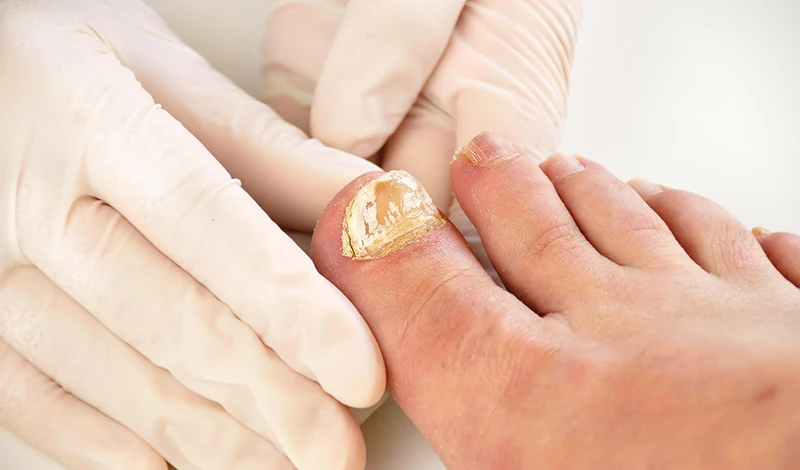
If you’re trying to figure out how to know if toenail fungus is dying, you might expect some kind of dramatic before-and-after moment. Like, one week the nail’s thick, yellow, and crumbly, and the next… perfectly smooth and pink.
Except — nope. Toenails grow painfully slowly. We’re talking about 1–3 millimeters per month. That means even if your antifungal treatment is doing wonders underneath, it’ll be weeks (sometimes months) before you see the new nail pushing out the damaged part.
And then there’s the tricky stuff:
- Temporary discoloration that can make you panic. Sometimes the nail color looks more yellow or cloudy right after starting treatment — often because the damaged area is loosening from the healthy nail underneath.
- Permanent damage vs. active infection. If the fungus has been there for a long time, parts of your nail might never look quite the same. That doesn’t mean the infection’s still alive — it might just be scar tissue in nail form.
- Patience (and more patience). You can’t speed up nail growth with willpower. Or biotin gummies. Or staring at it really hard (trust me, I’ve tried).
Pro Tip: Take a clear photo of your toenail every two weeks. It’s way easier to spot small changes — like the healthy nail slowly creeping from the base — when you can compare them side by side instead of relying on memory.
3. Early Signs Your Toenail Fungus Is Dying
Here’s where the detective work gets interesting. If you’ve been consistent with your nail fungus treatment, you may start to see hints that the tide is turning. These signs aren’t flashy, but they’re worth noting.
1. New Healthy Nail Growth at the Base
Look at the cuticle area — that’s where the fresh nail starts. If you see a smooth, slightly pinkish band creeping forward, that’s a strong indicator your body’s producing healthy keratin again, free of bacterial nail infection.
2. Reduction in Discoloration
The yellow, white, or brown streaks should start shrinking from the base upward. Sometimes the nail color changes fades gradually; other times, there’s a sharper contrast between the fresh nail and the damaged one.
3. Decreased Brittleness and Crumbling
If your toenail fungus is dying, the edge of the nail will feel firmer, less prone to breaking apart. You might even notice less debris collecting under the nail.
4. Nail Thickening Returning to Normal
Fungal nail infections tend to cause abnormal thickening. During recovery, the new nail might grow in closer to its original nail thickness. It won’t happen overnight, but it’s a good sign.
Infected vs. Healing Nail Edges
| Feature | Active Infection | Healing Phase |
| Texture | Rough, crumbly edges | Smoother, more solid edges |
| Color | Yellow/brown throughout | Clearer growth from cuticle forward |
| Thickness | Abnormally thick, uneven | Slowly returning to normal thickness |
| Debris Under Nail | Frequent buildup | Less buildup over time |
4. Changes in Nail Texture & Appearance
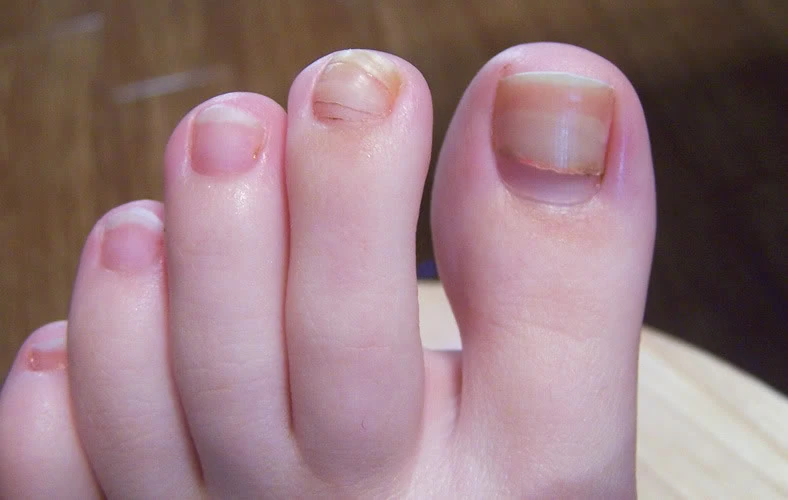
When you’re paying close attention to how to know if toenail fungus is dying, texture can be just as telling as color. Nails don’t just heal in shade — they heal in feel. That means subtle changes you might notice when clipping your toenails or running your fingers over them.
1. Smoother Nail Surface Emerging
In the earlier stages of infection, the nail often feels rough, almost grainy. As the nail fungus recovery progresses, a smoother surface starts replacing the damaged area. It’s not perfectly glassy right away — sometimes it’s a mix of smooth growth near the cuticle and rougher texture toward the tip.
2. Reduced Ridges or Flaking
Deep ridges that once cut across the nail may start to fade, and flaking layers become less common. This is one of the more satisfying stage of toenail fungus treatment and healing to notice because it feels like the nail is regaining its structure.
3. Normal Shine Returning
Healthy nails have a natural, faint sheen — not glossy like nail polish, but not dull either. If you start noticing that understated shine creeping back, it’s often a good indicator that you’re in the nail fungus healing process.
Pro Tip: Buffing your toenail gently with a fine nail buffer can help you better see the difference between old, damaged nail and new, healthy growth. Just don’t overdo it — fragile healing nails still need protection.
5. Symptom Relief & Comfort Improvements
Interestingly, you can sometimes feel that your toenail fungal infection is dying before you see obvious nail changes. This is especially true if your infection came with discomfort.
1. Less Tenderness or Pain Around the Nail
When nail fungus is active, it can inflame the surrounding skin, making even light pressure unpleasant. As the infection subsides, that tenderness usually eases — sometimes long before the proper nail care looks better.
2. Reduced Itchiness or Inflammation in the Skin Nearby
If the skin around your toe is itchy, red, or flaky, the absence of these symptoms can signal that your nail fungus treatment progress is moving in the right direction.
3. No More Foul Odor
It’s not pleasant to talk about, but toenail fungus can create a faint, musty smell from trapped debris under the nail. A lack of odor is one of those underappreciated signs that toenail fungus is going away.
Common Comfort Changes During Recovery
- Pain when wearing shoes decreases
- Skin irritation or redness fades
- Less pressure sensitivity when walking or running
- You stop “thinking about” your toe as much during the day
6. What’s Not a Sign of Healing?
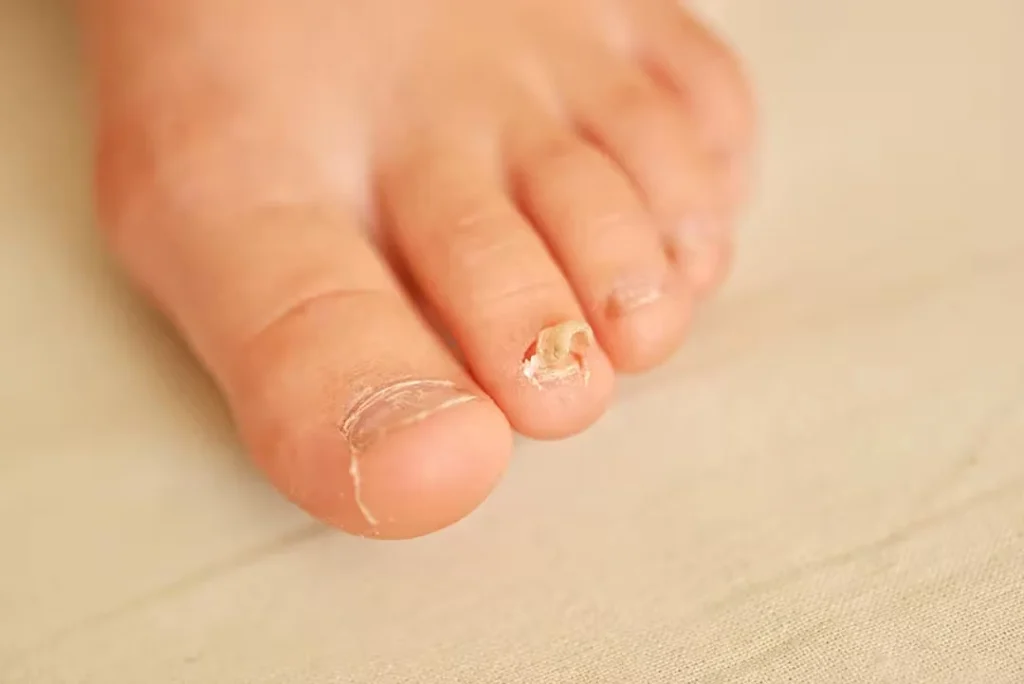
When you’re obsessively checking for how to know if toenail fungus is dying, it’s easy to misread what you see. Some changes might look like improvement but are actually unrelated — or even signs the fungus is still hanging on.
Common Misleading “Signs”
- Sudden nail peeling – This usually means the nail plate is weakening, not necessarily healing.
- Nail falling off completely – While this might remove infected tissue, it’s often due to trauma or severe infection, not recovery.
- Persistent discoloration without growth change – If the yellow or brown area hasn’t shifted upward after weeks, the infection may still be active.
Real Signs vs. Misleading Signs
| Real Healing Signs | Misleading “Signs” That Aren’t Progress |
| New clear growth from the cuticle | Nail removal or detaching suddenly |
| Gradual reduction in discoloration | Same discoloration in the same spot for months |
| Firm, less crumbly edges | Flakes breaking off without new growth beneath |
| Less pain or odor | Nail lifting with no healthy nail underneath |
Pro Tip: Focus on the movement of the healthy nail from the cuticle upward, not just surface changes. Stagnant appearance often means stagnant progress.
7. How Long Does It Take for Toenail Fungus to Die?
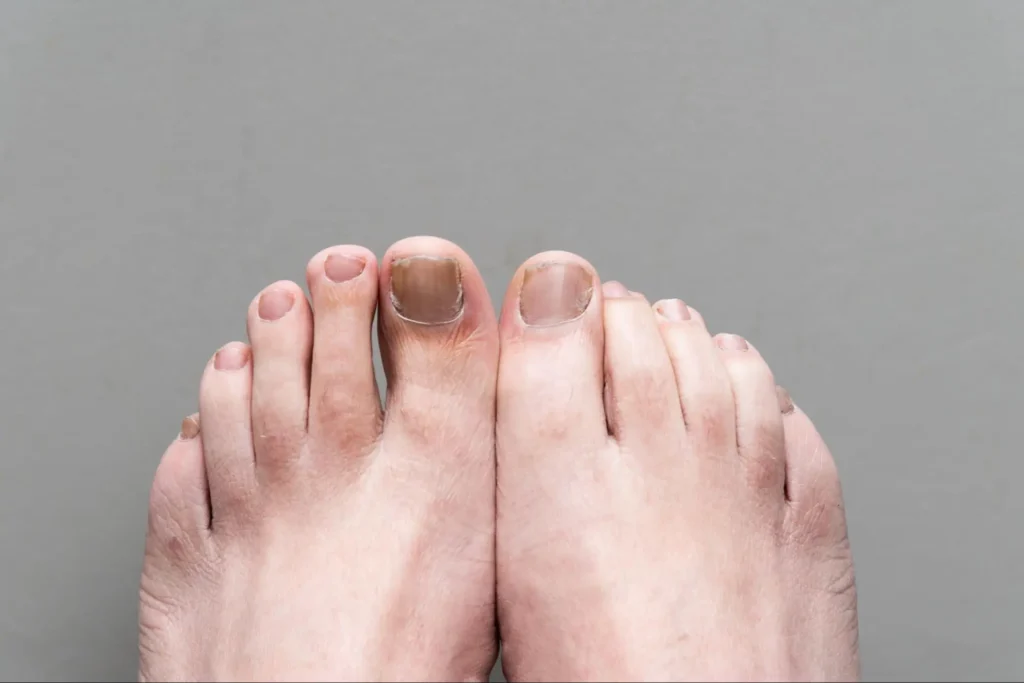
This is the part nobody loves hearing: nail fungus recovery is a marathon, not a sprint. Even if you’re doing everything right, the full toenail fungus healing process can take 3 to 12 months — sometimes longer for severe infections.
Factors That Affect Healing Time
- Severity of infection – Light surface infections may clear faster than deep nail bed infections.
- Your nail growth rate – Slower-growing nails = longer visible recovery.
- Overall health – Conditions like diabetes or poor circulation can slow nail fungus healing stages.
- Treatment type & consistency – Oral antifungals generally work faster than topical ones, but require medical supervision.
Typical Timeline for Toenail Fungus Recovery
| Timeframe | What You Might See |
| First 4–6 weeks | Subtle new growth at base, slight texture improvement |
| 2–4 months | Noticeable healthy section growing out, less discoloration |
| 6–12 months | Most or all infected nails are replaced by new healthy nails |
| Over 12 months | Rare, but possible if the nail regrowth rows very slowly or the infection was severe |
Pro Tip: Keep treating your toenail even after it looks healthy. Fungus spores can linger invisibly, and stopping too soon is one of the biggest reasons for relapse.
8. Supporting Nail Recovery
Once you’ve spotted the first encouraging signs and have a sense of how to know if toenail fungus is dying, the next step is making sure it stays gone. Recovery doesn’t just happen passively — you can speed it along and reduce the chance of relapse by taking care of your nails every single day.
1. Keep Nails Trimmed & Clean
Regular trimming prevents fungal buildup under the nail and makes topical treatments more effective. Always disinfect your clippers before and after use.
2. Antifungal Home Care Tips
- Apply tea tree oil (a natural or OTC remedies, antifungal remedy) once daily to the affected nail and surrounding skin.
- Use antifungal medications, sprays, or powders in shoes, especially after workouts.
- Consider UV shoe sanitizers to kill lingering spores inside footwear.
3. Shoe & Sock Hygiene to Prevent Reinfection
- Wear moisture-wicking socks to reduce sweat buildup.
- Rotate shoes to give them time to fully dry between uses.
- Avoid walking barefoot in public spaces like gym showers or pool decks.
4. Everyday Recovery & Prevention Habits
| Habit | Benefit |
| Trim nails straight across | Prevents debris accumulation and nail trauma |
| Disinfect nail tools | Stops cross-contamination |
| Change socks daily | Keeps feet dry and fungus-free |
| Treat shoes with antifungal spray | Kills hidden fungal spores |
| Use breathable footwear | Reduces moisture buildup |
Pro Tip: Even if only one toenail was infected, treat all nails during recovery. Fungus spreads easily, and prevention is easier than re-treatment.
9. When to Seek Professional Help
Sometimes, no matter how carefully you watch for toenail fungus dying signs, the progress stalls — or worse, symptoms spread. That’s when it’s worth calling in a podiatrist or dermatologist.
Signs of Treatment Failure
- No visible healthy growth after 3–4 months of consistent care
- Discoloration that deepens or spreads to other nails
- Nail becoming more painful or swollen instead of improving
Complications for At-Risk Individuals
If you have diabetes, circulatory problems, or a weakened immune system, even mild toenail fungus can become a bigger issue. You should see a healthcare provider sooner rather than later.
Pro Tip: Ask your doctor about a fungal culture test. It’s quick, painless, and confirms whether the fungus is still active or if you’re just seeing leftover damage from an old infection.
10. Before & After: Realistic Expectations
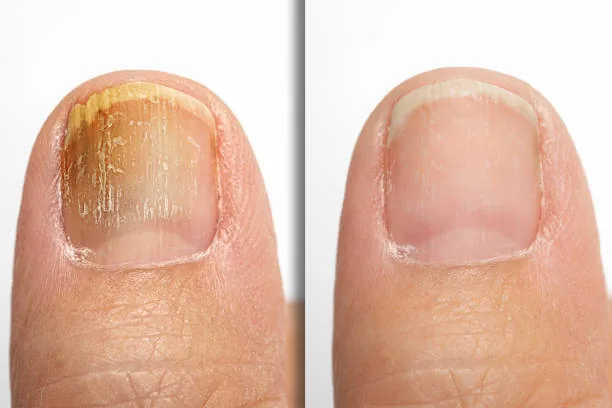
Here’s the thing — even when you’ve figured out how to know if toenail fungus is dying, your “after” picture might never look exactly like it did before the infection. That doesn’t mean the treatment didn’t work. Nails have memories, in a way. Damage from long-term infection can leave subtle ridges, uneven thickness, or small permanent changes in color.
Think of it as a scar — the fungus is gone, but the history is still there.
Infected vs. Recovering Nail
| Feature | Infected Nail | Recovering Nail |
| Color | Yellow, brown, or white discoloration throughout | Clearer from the cuticle down, nail discoloration pushed out |
| Texture | Rough, brittle, crumbling edges | Smoother, firmer edges with less flaking |
| Thickness | Abnormally thick or uneven | Slowly returning to original thickness |
| Comfort | Tenderness, occasional pain in shoes | Little to no pain, more comfortable walking |
Pro Tip: If you’re taking progress photos, use the same lighting and angle every time. That way, you’re comparing like with like and not being tricked by shadows or different foot health positions.
11. Common Mistakes That Delay Recovery
Funny thing — once you think you’ve figured out how to know if toenail fungus is dying, you might start getting a little overconfident. It’s not just you; we all do it. And that’s exactly where people trip up. Relapse is surprisingly common, and honestly, it’s usually because of avoidable mistakes.
1. Stopping Treatment Too Early
This one’s at the top for a reason. Just because the nail looks better doesn’t mean every last fungal spore has packed up and left. Stopping antifungal treatments too soon is like leaving a campfire smoldering — it can flare up again when you least expect it.
2. Wearing Contaminated Shoes or Socks
Those comfy running shoes you wore all through the infection? They might still be carrying microscopic fungus in the fabric. Same with old socks that weren’t washed hot or treated with antifungal laundry additives.
3. Ignoring Foot Hygiene
It sounds obvious — wash, dry, repeat — but you’d be surprised how easy it is to slack off. Damp toes, especially in closed shoes, are like a VIP lounge for fungal regrowth.
Pro Tip: Rotate your footwear and let each pair dry completely for at least 24 hours before wearing again. You can even use UV shoe sanitizers — not glamorous, but effective.
12. Myths About Toenail Fungus Healing
The internet is… well, a minefield. You can find five different answers to the same question about how to know if toenail fungus is dying, and three of them will probably be wrong. Let’s clear up a few persistent myths.
1. “If the Nail Falls Off, It’s Cured”
Not necessarily.The nail detachment might remove visible damage, but fungus can remain in the nail bed lifting and infect the new growth.
2. “No Symptoms Means It’s Gone”
You might not have pain or odor, but that doesn’t guarantee the infection is gone. The fungus can quietly persist under the nail.
3. “Home Remedies Always Work”
Some natural treatments help mild cases, sure. But relying solely on them for advanced infections can waste months and make the nail harder to treat later.
4. Common Myths vs. Facts
| Myth | Fact |
| A nail falling off means the fungus is gone | Fungus can survive under new nail growth |
| No symptoms = no infection | Fungus can still be present without obvious symptoms |
| Tea tree oil cures all cases | Works for mild cases, but often needs medical support for severe cases |
13. Over-the-Counter vs. Prescription Treatments
Here’s prescription medications where reality sets in — the treatment you choose changes how fast and how clearly you’ll notice the signs toenail fungus is going away.
1. When OTC Creams or Polishes Are Enough
If you catch the infection early — say, there’s just a faint streak of yellow under the nail or maybe the tip feels slightly thicker than usual — over-the-counter antifungal creams and medicated nail polishes can help. The catch? You’ve got to be religious about it. I’m talking daily applications for weeks, sometimes months.
- Polishes like amorolfine or ciclopirox create a medicated barrier that penetrates the nail gradually.
- Creams can work if the infection hasn’t gone too deep — especially paired with gentle nail filing to thin the surface so the medicine soaks in better.
What most people get wrong is stopping too soon. Just because the nail looks better doesn’t mean the fungus is completely gone. If you’re watching for healing signs — new healthy growth from the base, less brittleness — keep treating until that fresh nail fully replaces the infected one.
2. When Oral Medications Are Necessary
For deeper infections, where most of the nail is involved or the fungus has been hanging around for a year or more, topical treatments can only do so much. That’s when oral antifungals like terbinafine or itraconazole come into play. They work from the inside out, attacking the fungus through the bloodstream.
These are powerful — and they can be life-changing if you’ve been dealing with stubborn broken toenail fungus that just won’t die off. But they’re not for everyone. They require medical supervision, periodic liver function tests, and a conversation with your doctor about other meds you might be taking.
A lot of people notice visible improvement around the halfway point of a 12-week course — a thin line of healthy nail creeping in from the cuticle — but you’ve got to finish the course. Stopping early is like letting weeds regrow in your garden after pulling only the tops.
3. Role of Laser Therapy and Advanced Options
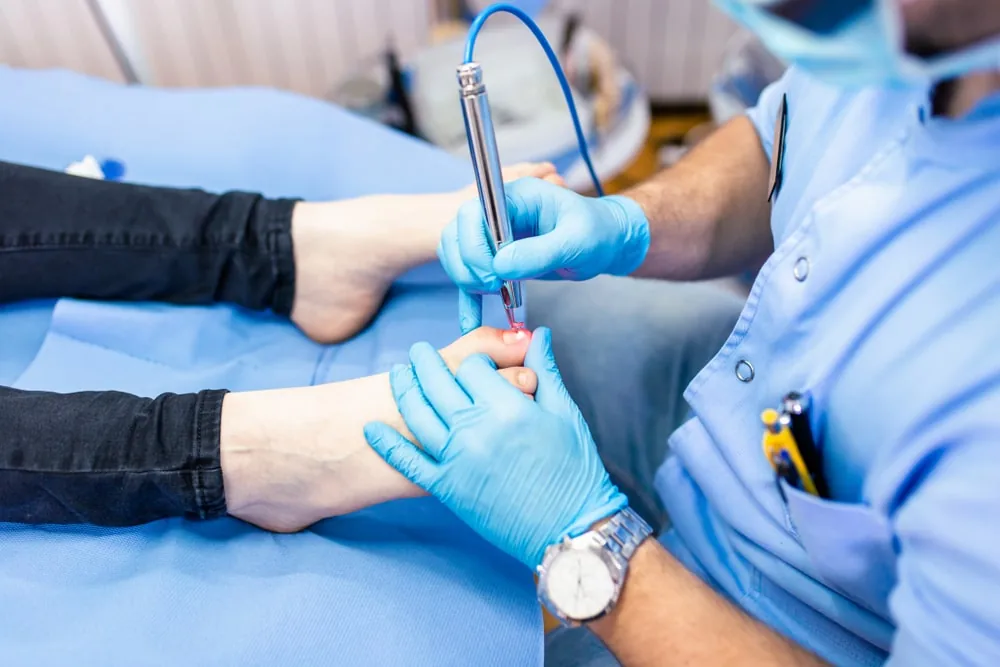
Then there’s laser therapy — one of those “it sounds futuristic, but it’s real” options. It uses focused light energy to heat and destroy the fungus inside the nail without harming surrounding tissue. The upsides? No daily creams, no pills, and minimal downtime. The downsides? It can be pricey, sometimes several hundred dollars per session, and most insurance plans don’t cover it.
It’s not always a magic bullet — results vary — but for stubborn or recurring cases, especially when oral meds aren’t an option, it can be a game changer. Some clinics also combine laser treatment with a topical antifungal polish afterward, to protect the new nail as it grows.
One thing I’ve noticed — people who get the best results with laser beam still follow the same prevention habits afterward: disinfecting shoes, keeping feet dry, and doing regular nail checks. Even the fanciest tech can’t help if you invite the fungus back in.
Pro Tip: Match your treatment intensity to the infection’s severity — too weak, and the fungus lingers; too strong without supervision, and you risk side effects.
14. Preventing Reinfection After Recovery
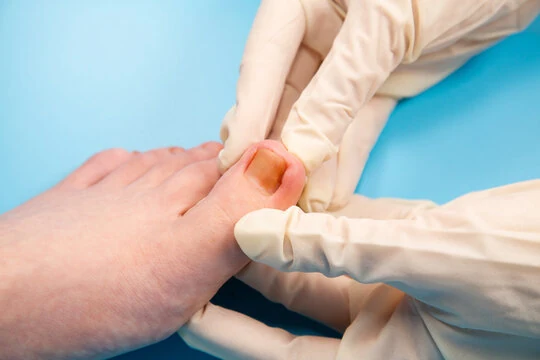
Once you’ve finally made it through the full nail fungus healing process — and believe me, it’s a marathon, not a sprint — the last thing you want is to start the whole thing over. Honestly, nothing’s more frustrating than watching new healthy nail grow in, feeling good about it, and then… spotting that same yellowish tinge creeping back. Prevention becomes your best friend here, and it’s not about perfection — it’s about staying just a little ahead of the fungus.
1. Disinfecting Footwear and Nail Tools
Shoes are like quiet little storage lockers for fungus. You can’t see it, but the warm, damp environment is ideal for fungal spores to hang around… and wait. If you’ve been treating an infection, chances are those spores are already in there. That’s why cleaning footwear isn’t a “nice-to-have” — it’s essential for foot health.
- Antifungal sprays or powders: I keep one by my door. A quick spray inside my shoes after wearing them takes seconds.
- Hot water sock washes: 140°F (60°C) or higher will kill most fungal spores. Cold washes? Not so much.
- Nail tool care: Clippers, files, even cuticle pushers — wipe them with alcohol after each use. And maybe keep a separate set for infected nails during treatment so you’re not cross-contaminating.
I learned this the hard way. I once clipped an infected toenail, forgot to disinfect the trimmer, and used it on a perfectly healthy nail a week later. You can guess how that turned out.
2. Choosing Breathable Socks & Shoes
Moisture is the enemy — and not just when you’re actively treating toenail fungus. Even after you see all the signs of improvement and feel like the infection is in the past, keeping feet dry is your best defense.
- Socks: Go for moisture-wicking materials like merino wool or synthetic blends. Cotton feels nice but traps moisture longer.
- Shoes: Look for mesh uppers or vent holes. Leather can work too, as long as it’s not lined with non-breathable fabric.
- Rotation: Give shoes at least 24 hours to dry between wears.
Sometimes I’ll slip my sneakers off under my desk at work just to give my feet a breather. People might think it’s weird… but my nails have been clear for three years now, so I’ll take the odd look.
3. Routine Foot Checks
If you’ve gone through this once, you know the drill — catching any problem early is way easier than fighting a full-blown infection. A simple weekly check is enough.
Here’s what to look for:
- Subtle color changes (yellow, white, or brown spots)
- A nail edge that feels thicker or crumbly
- Skin around the nail that’s peeling or red
It sounds obsessive, but I’ve caught early reinfections this way and stopped them with just a week or two of topical antifungal treatment. Compare that to a year-long battle, and it’s no contest.
Pro Tip: Keep a small antifungal cream or spray in your bathroom cabinet — using it at the first hint of trouble can stop a full infection from taking hold.
Conclusion
If there’s one thing I’ve learned about how to know if toenail fungus is dying, it’s that the changes are slow — almost sneaky — and they never happen all at once. You’ll probably notice a thin strip of healthy nail creeping in from the cuticle first, or maybe the yellowish tint will start to soften into a more natural shade.
Sometimes the surface feels less brittle under your fingertip, or that faint, unpleasant smell just… isn’t there anymore. These are the little victories worth watching for, even if they don’t seem dramatic in the moment. Still, patience is half the battle. Toenails grow at a snail’s pace, and even when you’re seeing signs that the fungus is losing its grip.
You’ve got to keep your routine airtight — treatments, nail hygiene, the whole lot. The trick to how to know if toenail fungus is dying isn’t just spotting those healthy changes, but following through long enough to make sure every last stubborn spore is gone.
That way, you’re not right back here six months from now, starting over with another round of meds or creams.
Frequently Asked Questions
1. How do I know if my toenail fungus is dying?
Look for clear, healthy nail growth at the base, a slow fade in discoloration, and a firmer nail texture. These are steady signs that toenail fungus is going away, even if the change feels slow.
2. Does the toenail have to fall off for the fungus to go away?
No — healthy recovery means the new nail pushes out the damaged part over time. A nail falling off often signals trauma or severe infection, not healing.
3. Can toenail fungus healing look worse before it looks better?
Yes, sometimes. As the old infected nail grows forward, it can look more yellow or rough temporarily, even though a healthy nail is forming underneath.
4. How long does it take to see signs that toenail fungus is going away?
Most people notice early changes within 4–8 weeks, but full nail fungus recovery can take 6–12 months because toenails grow so slowly.
5. If the pain goes away, does that mean the fungus is gone?
Not always. Pain relief is a good step in toenail fungus healing stages, but keep treating until healthy growth fully replaces the damaged nail.
6. Will toenail fungus ever heal on its own?
Rarely. Without treatment, the infection can linger for years or worsen, even if symptoms seem to fade for a while.
7. What’s the difference between toenail fungus dying signs and just trimming the nail?
Trimming only improves appearance temporarily. Real healing shows as new, clear nail growth from the cuticle that slowly pushes out the infected section.
8. How do I prevent toenail fungus recurrence after healing?
Keep feet dry, disinfect shoes, and wear breathable socks. Treat nails with antifungal products for a few weeks even after full recovery.
9. Can a podiatrist speed up the nail fungus recovery process?
Yes. They can prescribe stronger treatments, thin thick nails, and monitor your nail fungus treatment progress to make sure it’s working.
10. Should I stop treatment once my nail looks normal?
Not immediately. Continue for 2–4 more weeks to ensure all fungal spores are gone and prevent toenail fungus recurrence.

